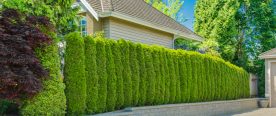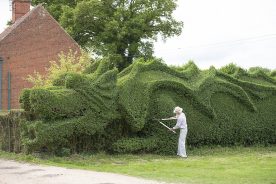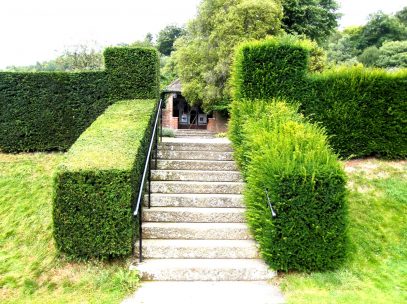Often the owners of household plots are faced with the problem of fencing: concrete, metal or wooden fences have lost their former popularity, and natural fences begin to fulfill a protective function after a long period of time. There is an alternative: a hedge of fast-growing perennial - evergreen or deciduous, from trees or shrubs.
Material Content:
A variety of hedges for landscaping
There are many forms of green fencing, so when planning a bookmark it is worth exploring the main groups that stand out on the basis of different parameters:
Height
- Borders, up to 50 cm high.
- Medium hedges up to two meters.
- High fences, the height of which exceeds 2 m.
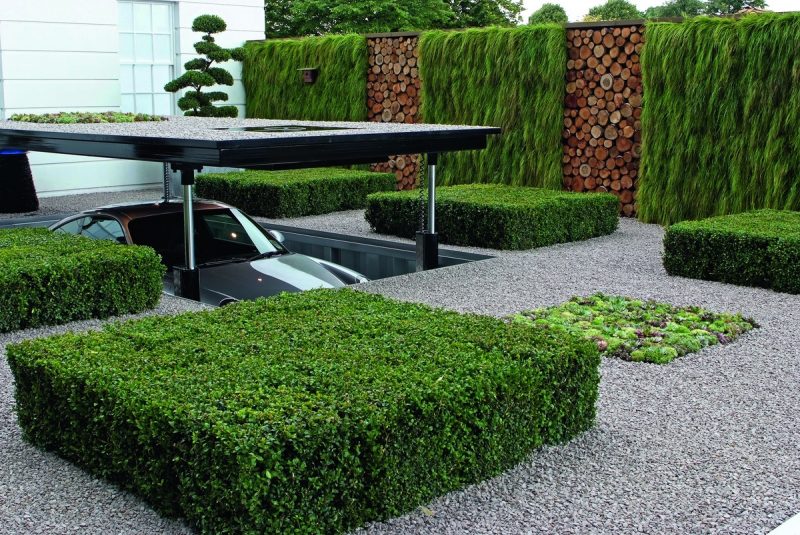
According to the formation
- Free-growing hedges. The view requires minimal labor on the part of the owner, while forming a beautiful natural fence. However, in order for such a fence to please the eye, it is necessary to correctly and carefully select plants.
- Formed stands. The group includes all hedges that are pruned. Such green fences look very elegant: a haircut allows you to get hedges of any shape. However, to leave the owner, certain knowledge and skills are required.
By the type of plants
- Evergreens. All conifers belong to similar plantings. Deciduous shrubs for a live evergreen hedge are also used: boxwood, holly holly, individual varieties of barberry and others.
- Deciduous. A very extensive subgroup, which includes not only shrubs, but also trees.However, with the advent of cold weather, such hedges lose their beauty.
- Perennial. This includes all shrubby and tree-like plants, the laying of which is carried out for a long period.
- Annuals. Used to decorate an existing fence made of artificial material.
By the speed of formation
- Fast growing fences. The subgroup includes plants that are able to form a complete fence for a maximum of 3 years.
- Fences of moderate height. The growth of plants for this type of fencing varies from 30 to 60 cm per year.
- Slowly growing live fences. The maximum annual growth of crops included in the subgroup is 20 cm, so the formation of such a fence will last at least 5 years.
By appointment
- Protective. The purpose of creating such plantations is to protect the site from external stimuli.
- Landscaping. Fences for dividing zones inside the garden.
- Decorative. The goal is to decorate buildings and hide any flaws.
What plants are suitable for a live fence?
Hedge plants are selected according to the following recommendations:
- Plants should grow at the same rate and have a similar density.
- Greens should block the site, but not penetrate the neighboring one.
The trees
Bookmarking a fast-growing hedge can be triggered by tree plants.
Eucalyptus

The culture is the fastest growing, which makes it an excellent plant for laying a green fence.
Willow

Often used to form a fast-growing fence. Some varieties are particularly decorative: goat willow, purple. Despite the undemanding culture to the soil, it needs a fairly high level of humidity.
Aspen

Unpretentious breed that can be cultivated on soils of any composition. For the formation of the hedge, young seedlings are used, the shoots of which are intertwined by the gardener. The height of the green fence is adjusted by cropping.
Field maple
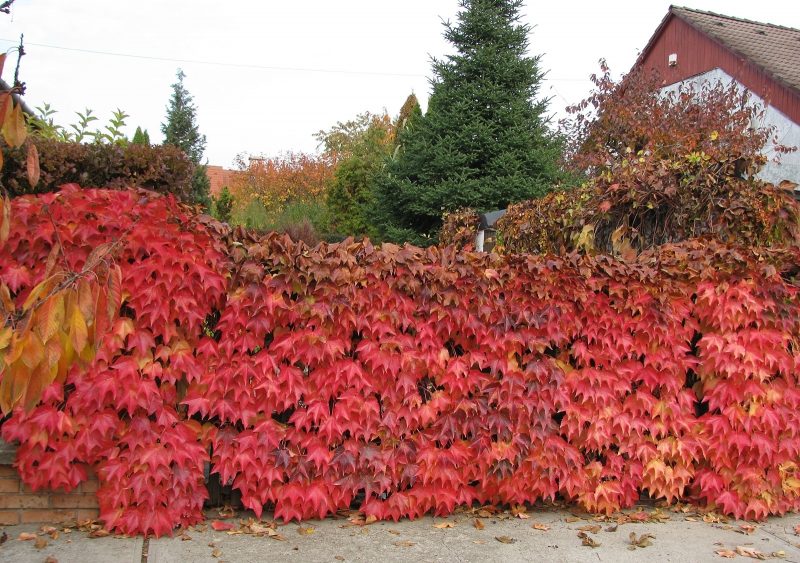
The use of trees of a similar breed, which is characterized by intolerance to acidic soils, is suitable for the formation of hedges from 2 to 4 meters. The haircut, to which the tree responds well, is carried out twice a year.
Shrubs
Fast-growing shrubs are the best option for quickly creating a beautiful natural fence.
Dogwood

A shrub with beautiful leaves, perfect for external fencing, perfectly tolerates shade and does not require special care. A shrub plant blooms before leaf buds bloom in late March-early April and delights owners with plentiful two-week flowering, after which nutritious fruits are formed. Prefers open areas with neutral soils.
Kalinolistny vesicle
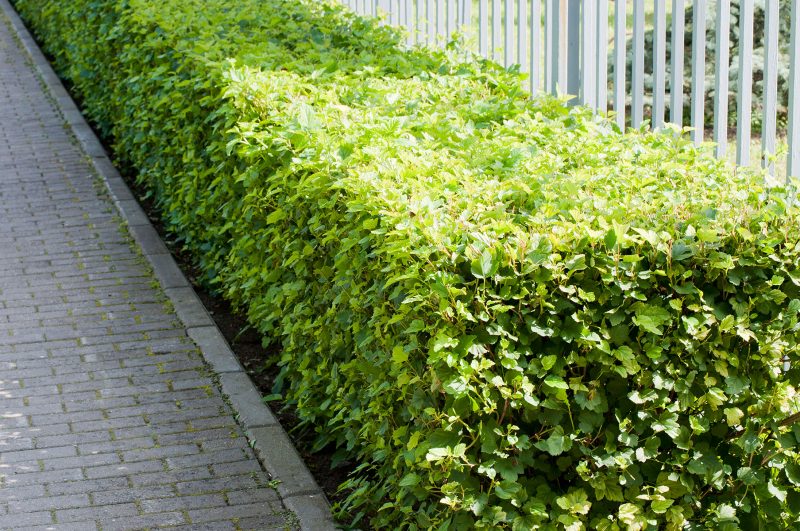
Undemanding plant, characterized by high decorativeness, with a magnificent rounded crown. Due to the shade in which the culture can grow quietly, the leaves lose their contrast.
Barberry
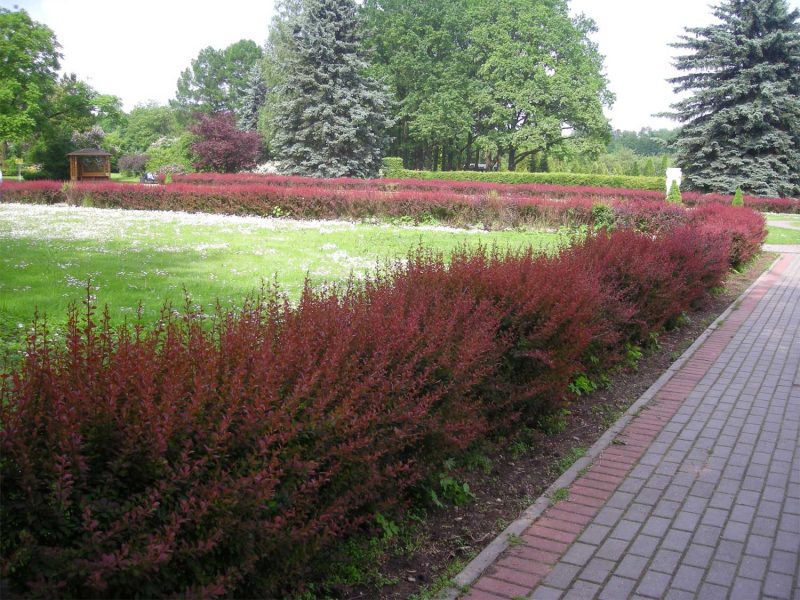
The drought-resistant shrub, which, thanks to the thorns, copes with the protective function, looks particularly decorative in the autumn - during the period of ripening of the fruits and the acquisition of various contrasting shades by leaf plates. Some hybrids winter with leaves on the shoots.
Turn
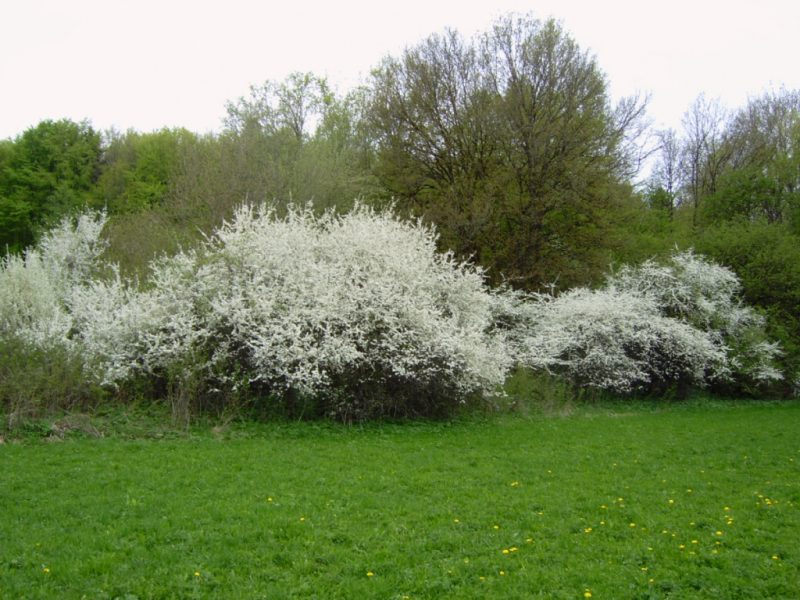
Unpretentious compact bush with a height of up to 3 m, which does not require careful pruning. The obstruction of the hedge formed by thorns is combined with the benefits of the fruits, which are formed as a result of flowering shrubs even before the leaves. During flowering, the bush exudes almond flavor.
Thuja Brabant
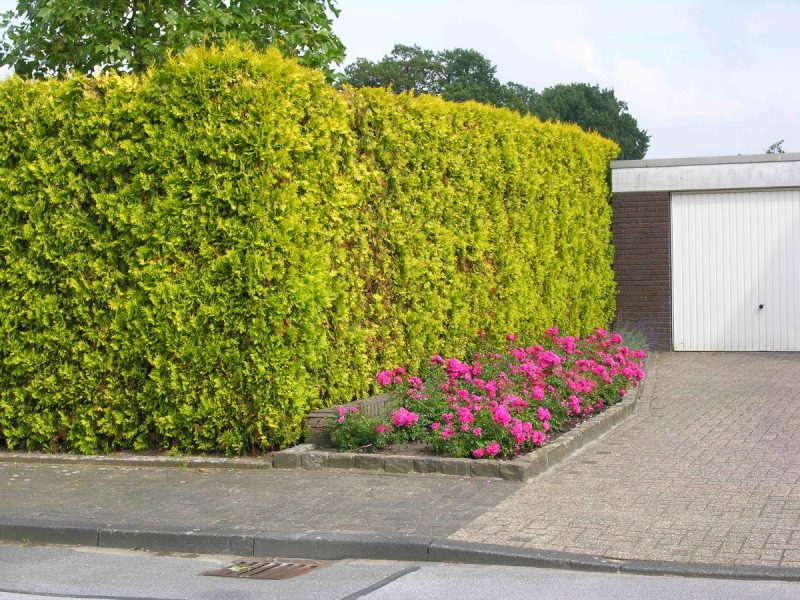
The evergreen coniferous shrub deserves special attention: of all conifers it has the largest annual growth of 40 cm. The splendor of the thuja crown directly depends on the regularity of haircuts.
Boxwood

The evergreen representative, used in the formation of borders and hedges of medium height, is able to tolerate moderate frosts.Winter winds and spring sun rays are more destructive for boxwood.
Climbing plants
Climbing plants require support, so they are used to decorate existing fences.
Climbing rose

Thanks to the thorns and weaves of the vines, the rose perfectly protects the fence. Most decorative stands out during the flowering period.
Clematis

Keeps decorative qualities throughout the warm season. For abundant flowering, the flower requires regular pruning.
Ivy

The decorativeness of the plant is manifested in the abundance of foliage, the loss of which is noted in too shaded places. A prerequisite for growing is to prevent drying out of the soil.
How to choose the best option?

To choose the right plants for natural fencing, it is necessary to take into account the main parameters:
- climate zone;
- terrain features;
- the frequency of formation of the future fence;
- the appointment of the fence;
- decorative period.
Coniferous or deciduous hedges?
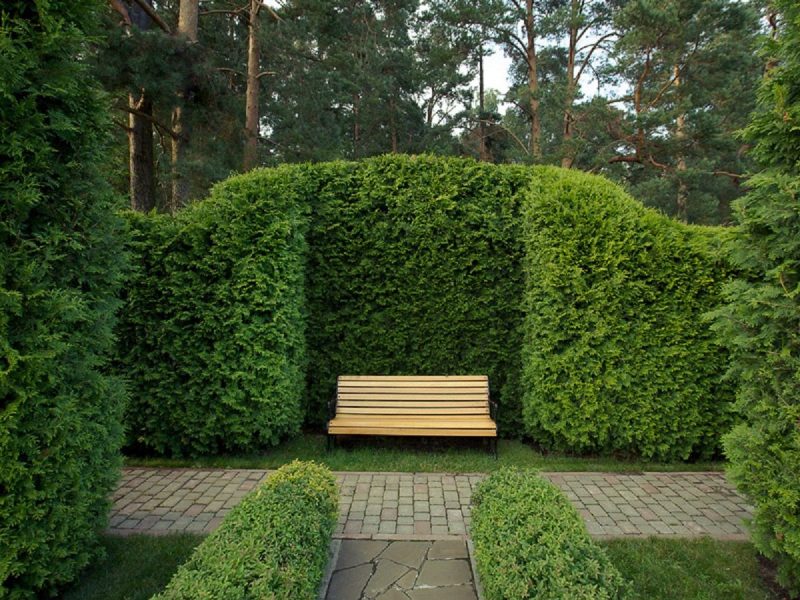
The main disadvantage of coniferous hedges that adorn, protect the territory year-round and enrich the air with volatile production is the slow growth compared to deciduous. The latter quickly grow, delight owners with flowers and even bear fruit, being a source of raw materials for winter harvesting.
Do-it-yourself landing and care rules
The hedge is laid using two or three year old seedlings in the spring before the sap flow begins or in early autumn so that the planting material has time to take root, according to the following scheme:
- A plot is prepared 10 days before the bookmark: a trench 50 cm deep and 100 cm wide is dug out along the fixed twine.
- When planting between copies, a distance of 25 to 200 cm is maintained, depending on the plant: for climbing crops - 25 cm, for bushes - 50-150 cm, for trees - over 150 cm.
Plants, as well as in single plantings, need such care measures:
- systematic watering;
- top dressing;
- timely trimming at least twice a year - forming in the spring and sanitary in the fall.
Examples of using
There are a large number of options for using hedges, which become the highlight of the entire site:
- zoning of the territory - demarcation on the site of zones of different purposes;
- game with forms - creation of hedges in the form of scattered cubes, balls on a site;
- "Wavy" fence - a fence created through the use of haircuts;
- flower wall - an artificial fence decorated with abundantly flowering plants;
- mix - a live fence in which details from artificial material are wedged;
- multi-tiered - multi-row fencing, consisting of cultures of different heights.
So, the hedge is a great solution to refresh any area.


